Welcome to Icons Only, Who What Wear UK’s deep dive into classic items that are once again under the spotlight. This month, journalist Emma McCarthy charts the rise and rise of the most noteworthy jean of all time, the Levi’s 501.
Close your eyes and think of jeans. You’re imagining Levi’s 501s, right? They are the OG of blue denim—the first pair ever made and the literal blueprint of every other pair in existence since.
They are, undoubtedly, the most universal and democratic item of clothing in the world, uniting Hollywood icons and rock ‘n’ roll legends, ’60s hippies and ’90s boy bands, politicians and protestors, to teenagers and tech tycoons alike. It’s no surprise TIME dubbed them the defining “fashion item of the 20th century”. From mom to skinny, bootcut to boyfriend, denim trends have come and gone, but 501s have outlived them all. In 150 years, they’ve never gone out of style. And, perhaps, they never will.
But what is the secret to their everlasting youth? When and how did they become such an icon? Are all 501s created equal? And which year is considered the best vintage? Read on to find out everything you could ever want to know about 501s (and probably a bit more)…
(Image credit: Courtesy of Levi’s)
The Origins
The story began during the California Gold Rush, with a tailor named Jacob Davis and the invention of copper rivets. He partnered with dry-goods businessman Levi Strauss to manufacture riveted jeans, and in 1873, together they patented the version which would become the 501 Original. The sturdy jeans were designed for gold miners, and before long, became a staple of ranchers, pioneers, prospectors and cowboys in the Wild West. John Wayne famously wore a pair of cuffed 501 Originals in the 1939 Spaghetti Western Stagecoach. Then, during World War II, the 501 was designated an essential or “staple work clothing” by the U.S. War Production Board. Materials were rationed and production was stripped back accordingly, with 501s from this period marked as “501S” (the “S” stands for “simplified”).
Icons in Levi’s 501s
The birth of the modern 501 jean as we know it today was in 1947. The design became fully evolved, with old-fashioned trimmings such as suspender buttons and back cinches gone and rationed hardware reinstated. The post-war boom also meant 501s were no longer exclusive to workwear and found favour with artists, musicians and Beatniks like Jack Kerouac and Neal Cassidy. “This was the era when denim became ‘dangerous’, banned from schools and associated with fringe organisations like motorcycle clubs,” says Levi’s brand historian Tracey Panek. “Think of the Levi’s 501 jeans Marlon Brando wore in The Wild One (1953) with a white T-shirt and leather jacket, helping to popularise the look of the rebel.”
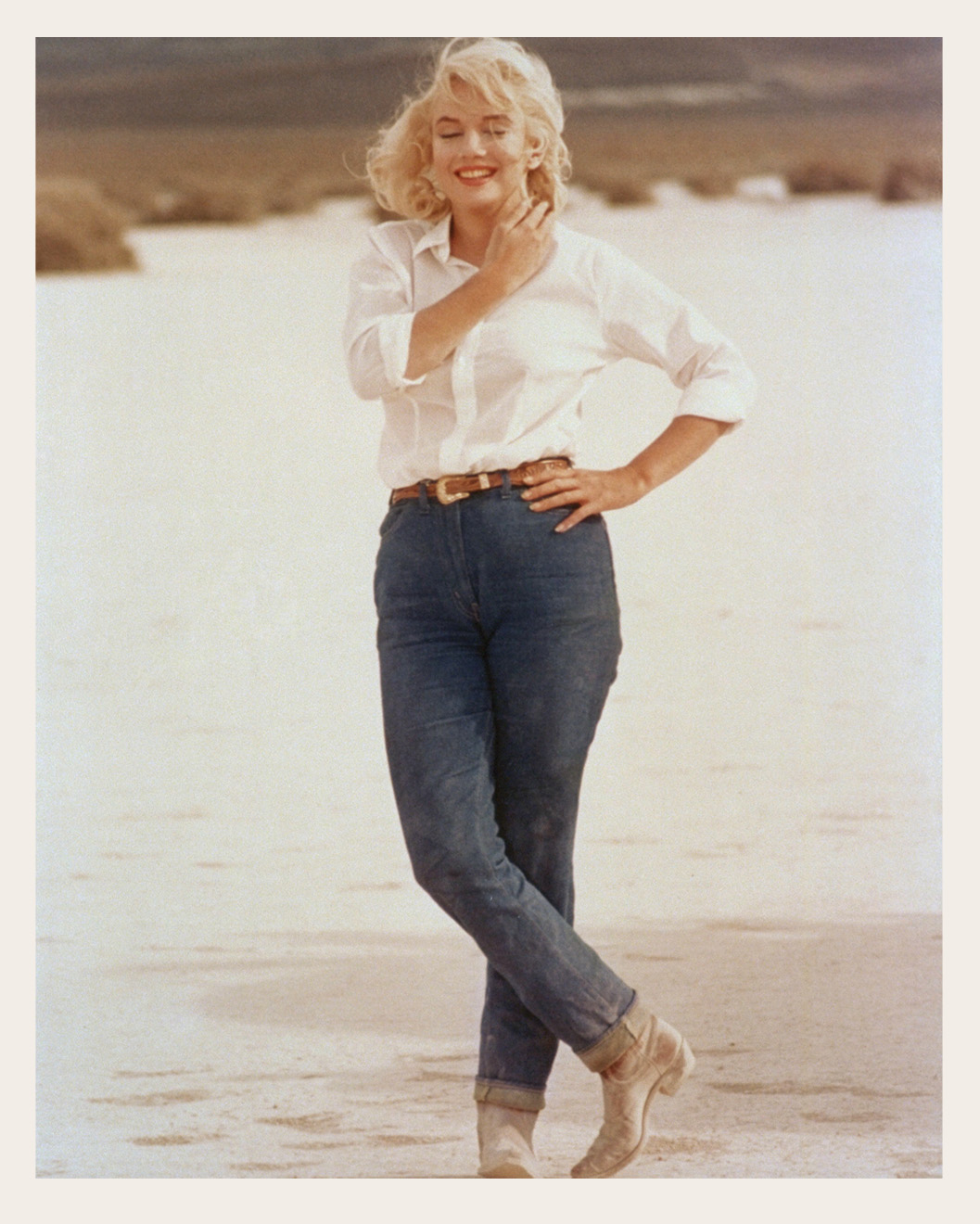
(Image credit: Getty Images)
In the 1960s, stars of the silver screen like Marilyn Monroe showed a more glamorous side to the 501. Bob Dylan wore a pair of custom 501s on the cover of two studio albums. By the ’80s, the jeans were so iconic they were even coveted behind the Cold War’s Iron Curtain—so much so that they were actually traded as currency on the black market and became the uniform of the youths sitting atop the Berlin Wall as it fell.
The 1990s were a defining era for the 501, kicked off by Vogue‘s iconic January 1990 cover starring supers Cindy Crawford, Naomi Campbell, Linda Evangelista, Tatjana Patitz and Christy Turlington all wearing 501s. ’90s style icons including Winona Ryder, Pamela Anderson, Princess Diana, Nirvana’s Kurt Cobain and Apple head honcho Steve Jobs followed suit. Cut to today, and they remain a mainstay in the wardrobes of fashion editors, stylists, models, designers and a new generation of Instagram-famous celebrities such as Hailey Bieber and Sofia Richie Grainge.
In terms of how they’ve been styled throughout their lifespan, the Levi’s 501 leaves much room for personal interpretation. The cornerstone of countless outfits, really, anything goes, but some of the more timeless ways of wearing them include with plain but well-cut T-shirts, blazers and—my personal favourite—a crisp white button-down shirt. I struggle to think of an item that has so seamlessly transitioned through the decades and their associated aesthetics than the 501.

(Image credit: Getty Images; Everett Collection)
Finding Your Levi’s 501 Fit
Like any good pop-culture icon (see also Madonna), Levi’s 501 Originals have moved with the times over the past 150 years. Yet, whilst trends have influenced its rise, wash and taper, the core silhouette has remained largely the same, which is key to its enduring legacy. Amongst the most notable variations came in 1981, with the introduction of the first 501s cut for women. In 1954, there was also a very brief dalliance with a zip fly named 501z (the signature button fly is an original feature, as zippers had not yet been invented), which is now a rare collector’s item on the resale market. In 2003, the 501 was overhauled for Levi’s 150th anniversary. Modern tweaks included increasing the leg opening by half an inch, straightening the back rise for a more comfortable fit at the thigh and extending the rise of the waist.
If you yearn for the bygone fit, Levi’s has reintroduced historically accurate throwback 501s that are true to the original cut from that year, including the ’93s (with a classic mid-rise and touch of bagginess), the ’81 (with a slightly tapered leg and high waist) and the ’54 (with a slimmer leg and straight fit). Or, as the brand puts it, “They’re the vintage jeans you’ve always dreamed of finding at the thrift store, but without all the rummaging.” There’s even a stitch-for-stitch reproduction from the 1922 archives, right down to the centre-back cinch and suspender buttons.

More modern iterations include 501 skinny jeans, ankle crop and lightweight denim for summer. There’s even an extra-durable pair designed especially for skateboarders and a plant-based version for vegans, along with its first fully recyclable Circular 501s. Purists can still get their hands on the original shrink-to-fit jeans. Made from raw denim, they come with an instruction manual which involves wearing them in a hot bath to mould them to your body. The process is more than a little bizarre and takes a few hours, but it’s worth the wait for a one-of-a-kind custom fit that’s unique to you.
Levi’s 501 Facts
Did you know that the very first 501 jeans, or “waist overalls”, as they were known back then, were probably made by sewing machine operators in their homes before the first company factory was established? Or that the tiny front-right pocket of the 501 was originally created for a pocket watch, which was a common accessory in the 19th century?
But probably my all-time favourite fact is that Levi Strauss—the man who gave blue jeans to the world—never actually wore a pair of Levi’s 501s. According to Panek, “They were work pants, and the successful businessman dressed in a formal suit.”
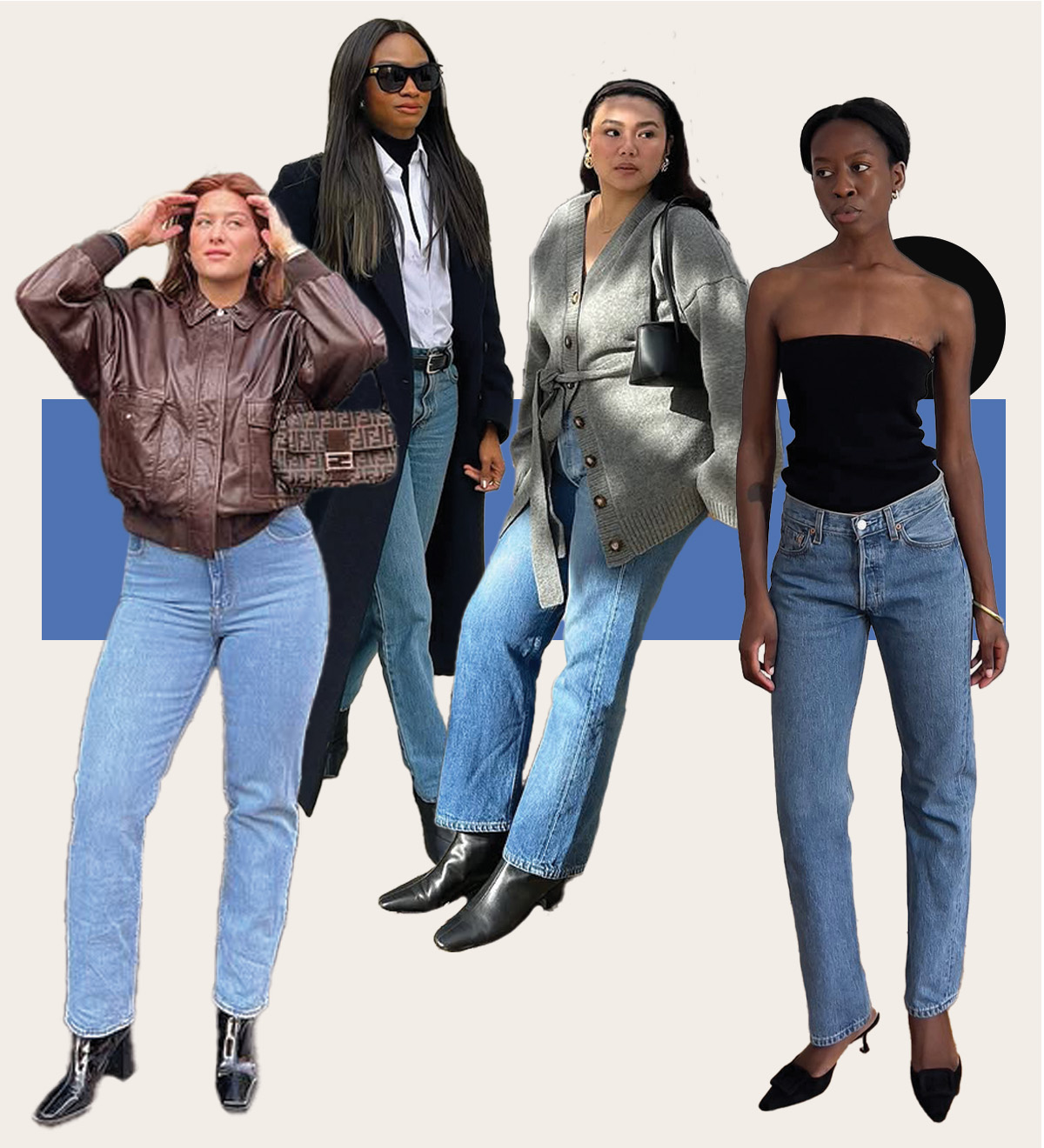
How to Date Your Vintage Denim
You can’t go wrong with a pair of vintage Levi’s 501s. Not only are they timeless, they’re built to last. Many of the earliest models are tricky—if not impossible—to track down. For example, Levi’s itself purchased a pair of circa-1890 501s in 1997 for $25,000 (roughly £20,000). But so long as you’re just looking to furnish your wardrobe, not a museum exhibition, here’s what to look out for.
- Check the care label: If you want an American classic that’s actually made in America, it must pre-date 2002. This is the year the last remaining Levi’s production facility on U.S. soil (the Valencia Street factory in San Francisco) shut down, so any 501s produced after 2002 will have almost certainly been made overseas. What’s more, if the care label is missing entirely, it could be a clue you’ve struck gold, as care labels weren’t introduced to U.S.-made garments by law until 1971.
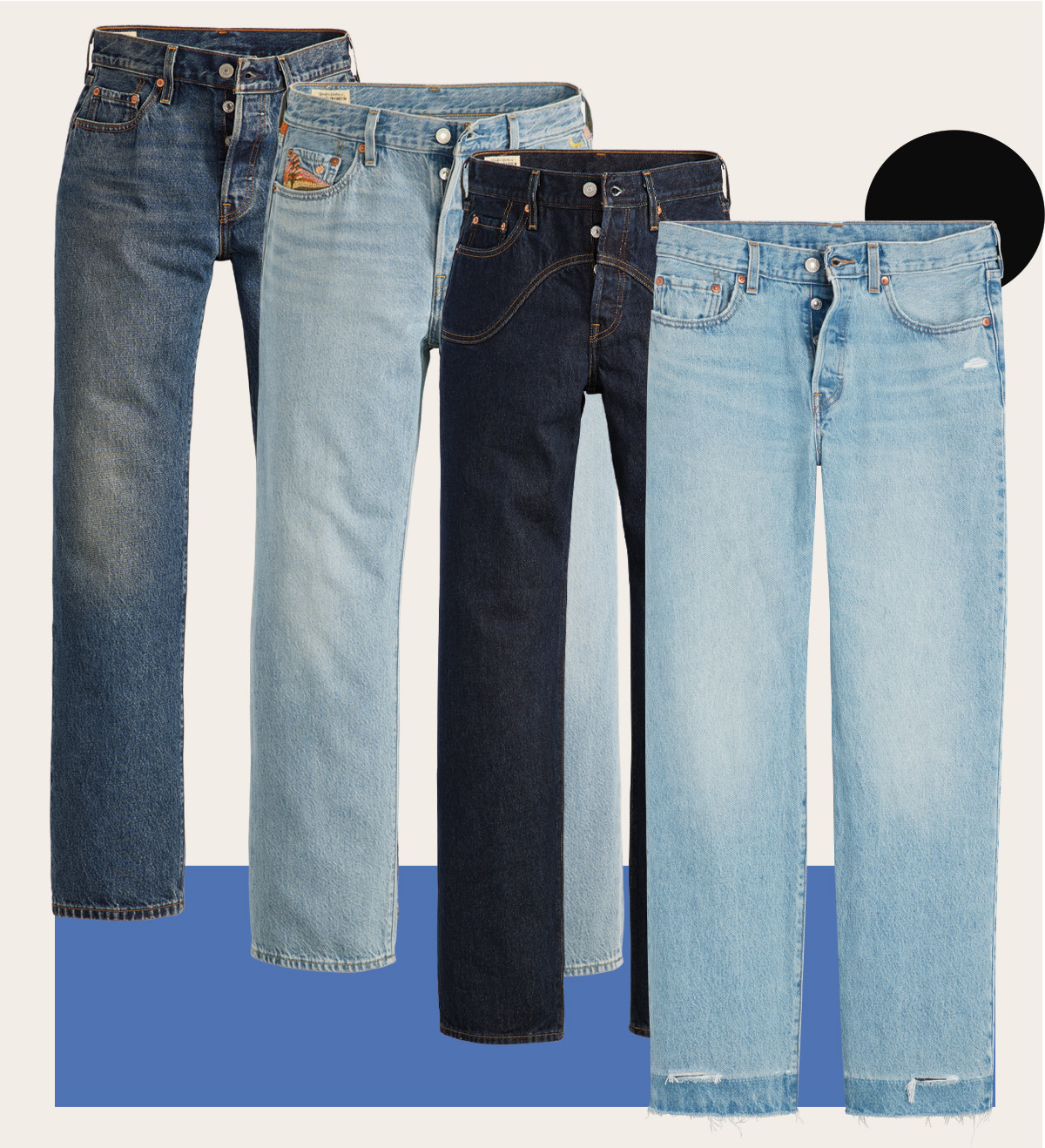
(Image credit: Courtesy of Levi’s)
- Inspect the fabric: Levi’s had a long-standing relationship with The Cone Mills White Oak factory in North Carolina, which developed the signature 10oz red selvedge denim exclusively for the 501 jeans in 1927. But in 1984, this high-quality, extra-durable, harder-to-produce type of denim was replaced with a more economical wide-loom denim. Shoppers on the hunt for an original selvedge vintage 501 jean should look for a red thread woven into the selvedge (or “self-edge”) denim seam, which can be spotted inside if you roll back the cuff.
- Examine the red tab: The classic Red Tab device (found on the side of the back-right pocket) first became a thing in 1936, when Levi’s wanted to trademark its signature blue jeans. Since then, the Red Tab has changed in subtle ways and can serve as a timestamp to help you determine how old your vintage pieces are. Before 1953, for example, the brand name was stitched on one side only. Also, keep an eye out for “LEVI’S” (spelt all in uppercase). This is affectionately referred to amongst vintage aficionados as the “Big E” (as the vowel is the only letter which takes a different form when capitalised) and is a sure sign that the jeans date to 1971 or earlier (aka the Holy Grail).
Shop Levi’s 501s
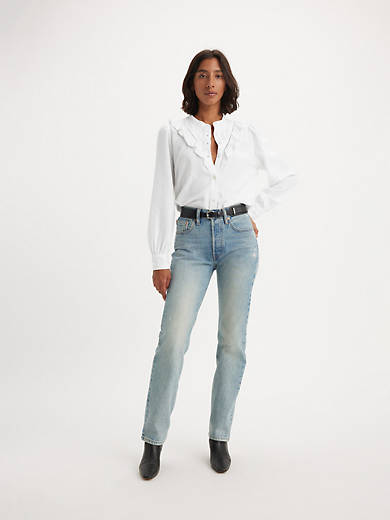
Levi’s
501 Original Jeans
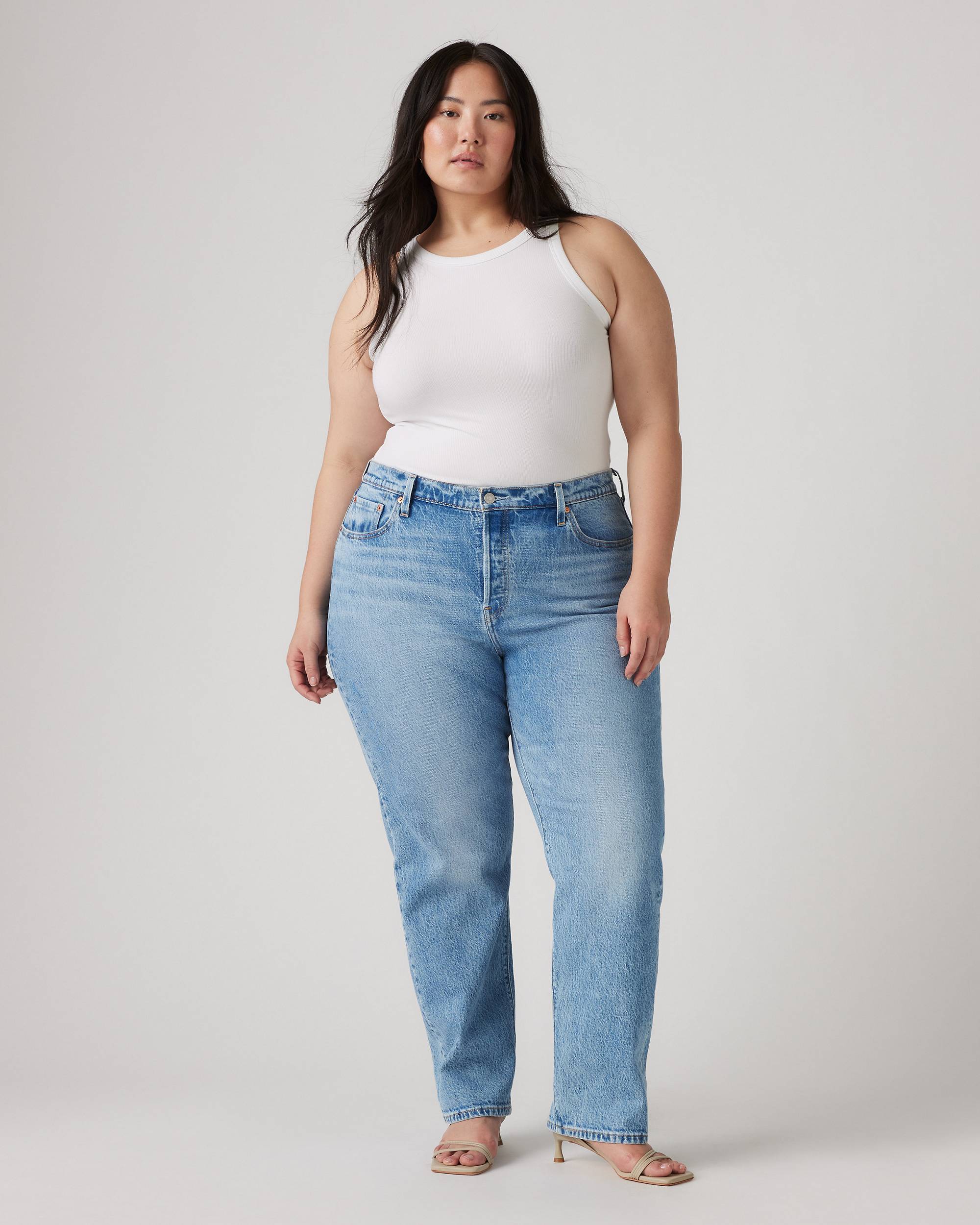
Levi’s
501 Original Jeans
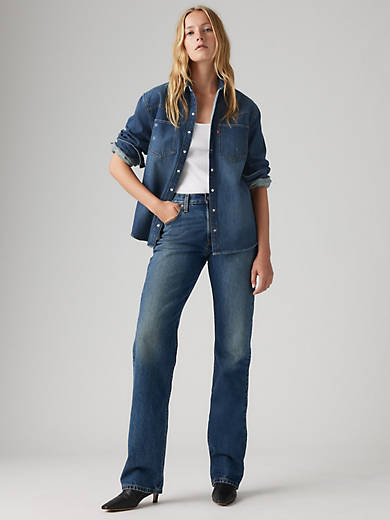
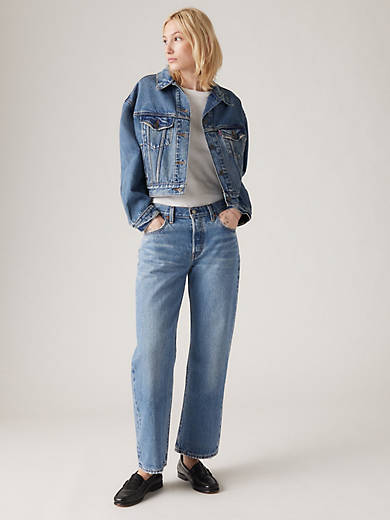
Levi’s
501 90’s Ankle Jeans
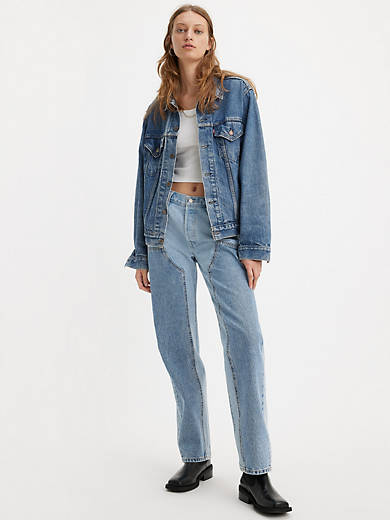
Levi’s
501 90’s Chaps Jeans
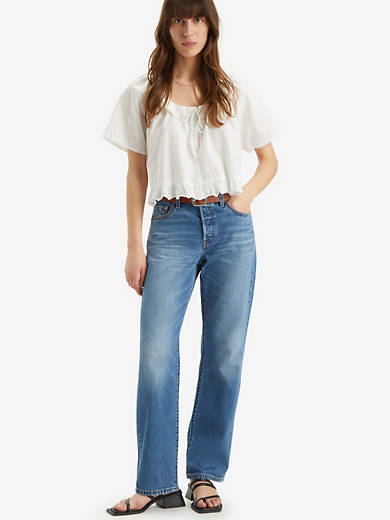
Levi’s
501 ’90s Lightweight Jeans
Shop Preloved and Vintage Levi’s 501s

Levi’s
501 Straight Jeans

Levi’s
501 Straight Jeans


Levi’s
501 Straight Jeans

Levi’s
501 Straight Jeans

Levi’s
501 Straight Jeans
https%3A%2F%2Fwww.whowhatwear.com%2Ffashion%2Fdenim%2Flevis-501-jeans-history
#Icons #Storied #History #Levis #Jeans
https://www.whowhatwear.com/fashion/denim/levis-501-jeans-history


















